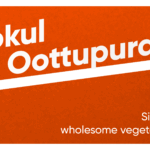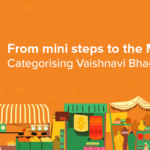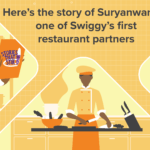Ghevar is one of the most popular sweets of Rajasthan and is absolutely delicious. This disc-shaped dessert with an intricate honeycomb texture has been quite popular for ages in Rajasthan and North India. Festive occasions like Teej, Gangaur, and Raksha Bandhan are incomplete without this golden, syrup-soaked delight.
Ghevar is made primarily with flour, ghee, and sugar syrup. Its unique porous shape, crisp surface, and delicate flavor set it apart from other desserts. Ghevar is garnished with dry fruits, saffron strands, or creamy malai.
Let’s take a flavorful journey back in time to trace the Ghevar origin, see how it has evolved over generations, and explore its different modern-day avatars.
The Origin of Ghevar – Where It All Began
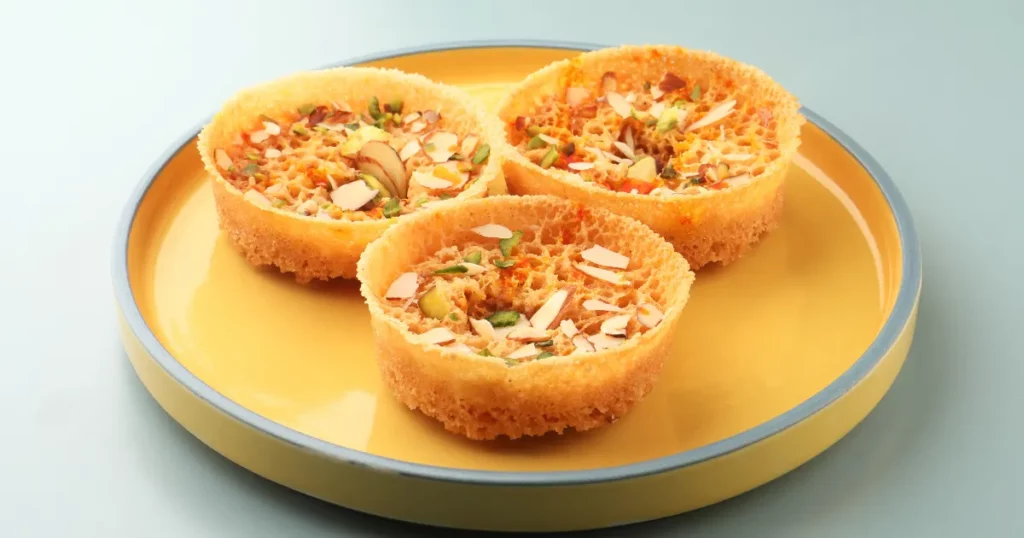
While the exact date of Ghevar origin remains covered in mystery, food historians and folklore point to a few key highlights that trace the dessert’s ancestry.
- History of Ghevar can be traced to Rajasthan. Its invention is closely tied to the arid climate and the culture of the region.
- It is believed to have originated centuries ago, during the era of Rajput kingdoms. According to Ghevar history, this dessert is said to have been developed in royal kitchens for festive feasts and regal banquets.
- Ghevar gained prominence due to its cooling ingredients like ghee and milk, which made it ideal for consumption during the monsoon season, offering a balance to the body’s heat.
- The dessert was traditionally made in large quantities during festivals like Teej and Raksha Bandhan, which fall during Sawan (monsoon)—a season of celebration, fertility, and prosperity in Rajasthan.
- Its disc shape and porous texture were achieved using traditional techniques involving a mixture of cold water and ghee, making it a delicacy that required both skill and patience.
This delectable dessert gradually made its way from the royal palaces of Jaipur, Bikaner, and Udaipur to the common man’s plate, becoming a part of celebration and festive occasions in Rajasthan and North India.
Evolution of Ghevar Over Time
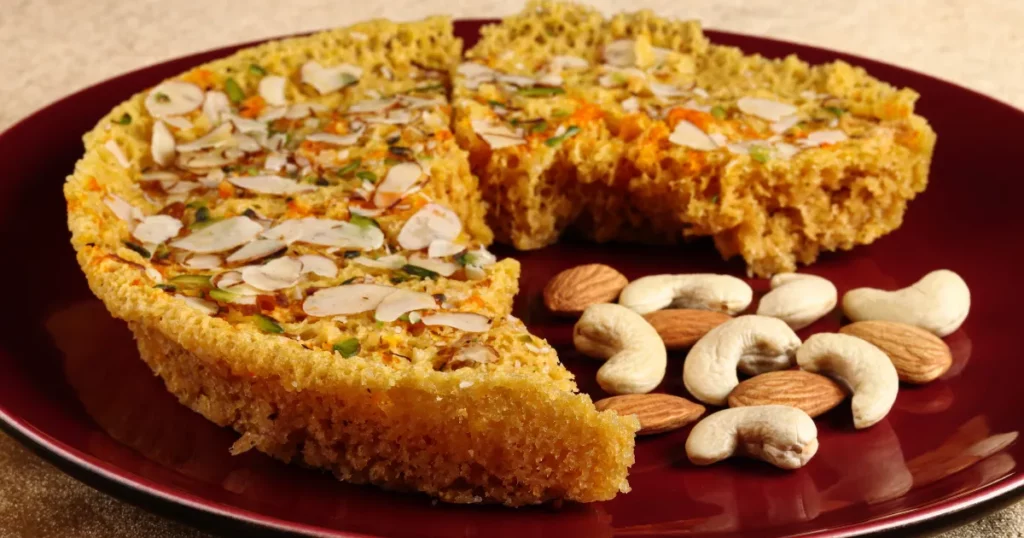
From the rustic kitchens of Rajasthan’s royalty to the vibrant counters of modern Indian sweet shops, the story of the origin of Ghevar is incredibly exciting. With time, Ghevar has also undergone some evolution that defines this subtle and delicious dessert.
- Handmade to Machine-Made: Initially, Ghevar was handcrafted using iron molds and open-fire stoves. The batter was carefully poured drop by drop into hot ghee, forming the signature lattice structure. Today, while traditional techniques are still honored, many sweet shops use semi-automated processes to meet the festive demand.
- From Local to Global: With the Indian diaspora spreading across the world, Ghevar has transcended borders. Now, it’s not uncommon to find boxes of Ghevar being shipped internationally during festive seasons.
- Innovative Twists: As the younger generation craves fusion food, Ghevar has also seen innovation, from toppings to flavors, without losing its authentic roots.
Let’s explore a few popular types of Ghevar that have added new dimensions to this classic dessert.
1. Traditional Ghevar
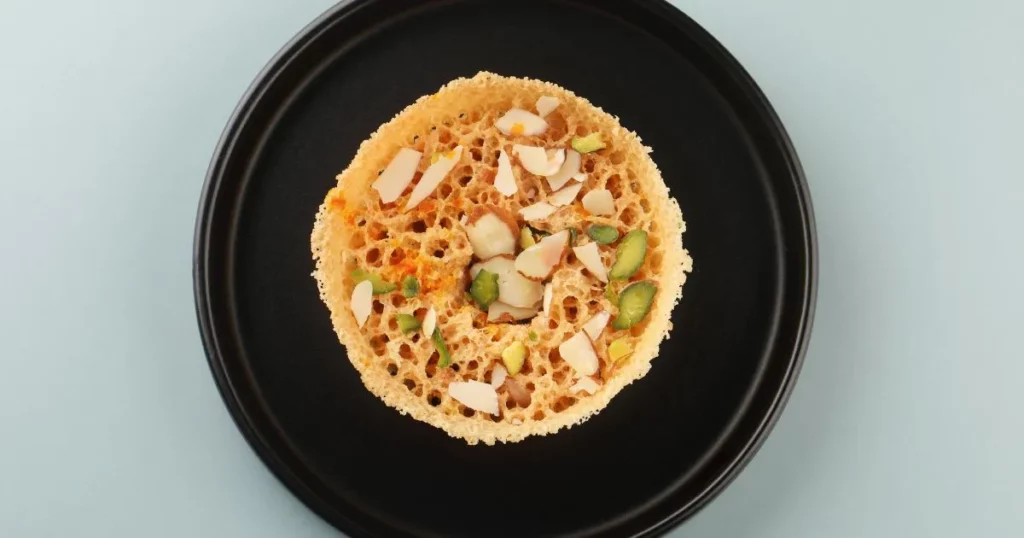
This is the original and most widely known version. Made with refined flour batter and deep-fried in ghee until golden brown, it is soaked in sugar syrup and garnished with chopped nuts and saffron. It is usually served plain or lightly flavored and forms the base for most other types.
2. Malai Ghevar
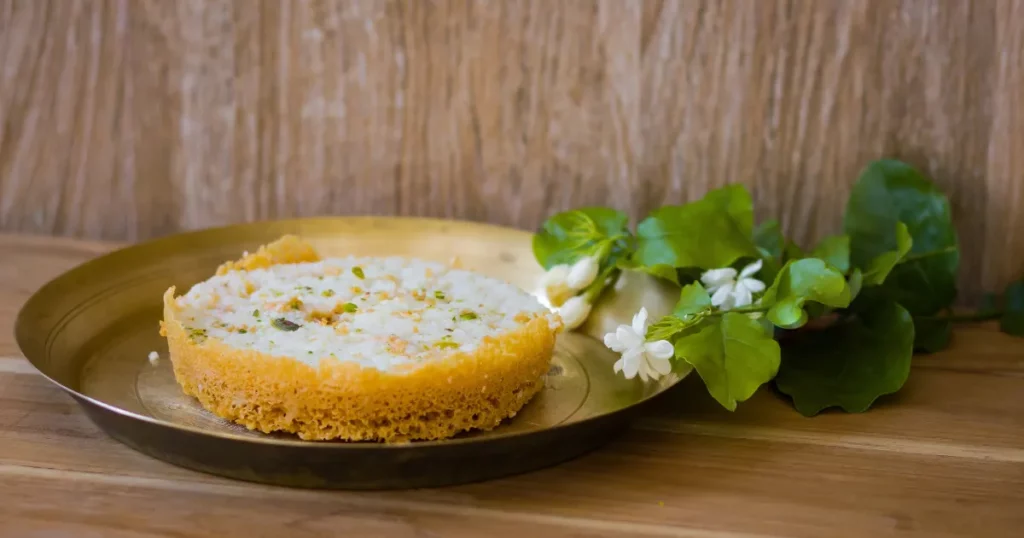
A richer, creamier take on the traditional version, Malai Ghevar is topped generously with a layer of thickened milk (malai or rabri), cardamom, dry fruits, and silver varq. It adds a silky texture to the crispy base, creating a delicious contrast of crunch and cream.
3. Chocolate Ghevar
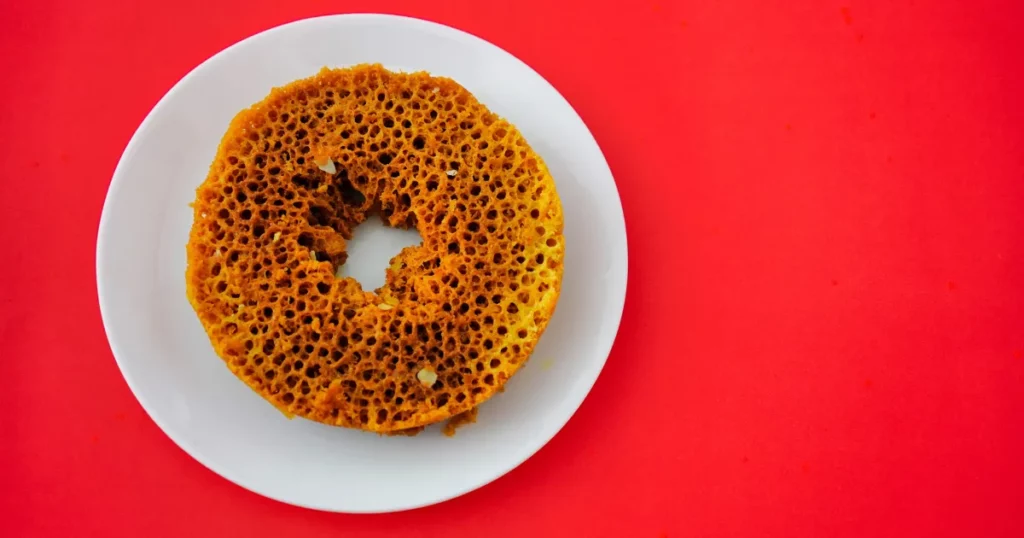
This is a modern twist for the chocolate lovers. Chocolate Ghevar is layered or drizzled with chocolate syrup or ganache. Sometimes, chefs even infuse cocoa into the batter itself. This variation bridges the gap between traditional Indian sweets and global dessert trends, making it a hit among children and chocolate lovers.
Other innovative types include Fruit Ghevar, Fusion Ghevar with kulfi or ice cream, and even saffron pistachio Ghevar, each version telling a new story while paying homage to its roots.
Celebrate Tradition—Order Authentic Ghevar on Swiggy Today
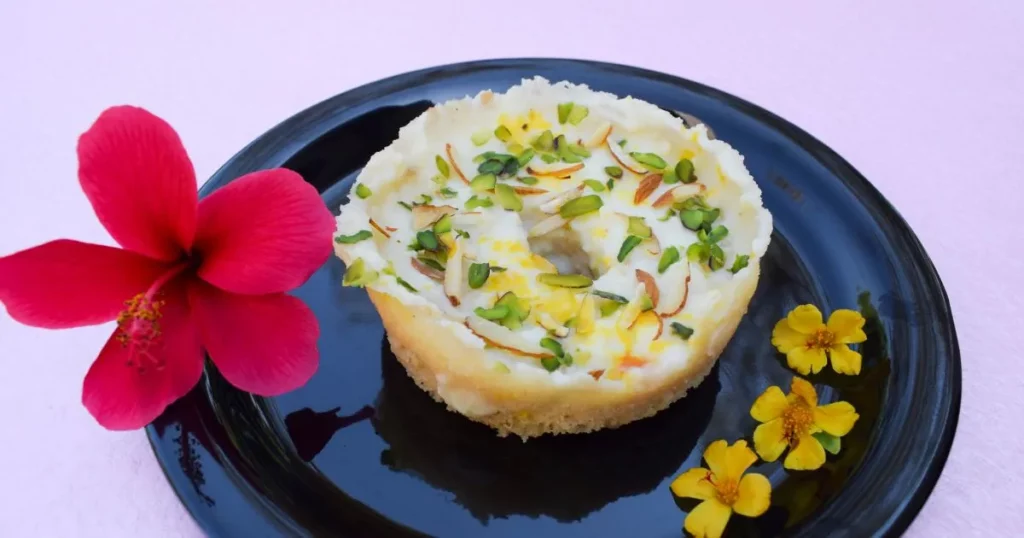
Are you craving a piece of this royal indulgence but don’t have access to traditional sweet shops? Don’t worry! Swiggy’s got your back! You can now order Ghevar online near me from some of the best mithai shops in your city and have it delivered to your doorstep.
Whether you are looking for a classic Malai Ghevar to surprise your family on Raksha Bandhan or want to try a modern Chocolate Ghevar for a sweet twist, Swiggy’s curated listings of top-rated sweet shops and quick food delivery make it easier than ever to celebrate traditions without the hassle.
So why wait? Celebrate festivals with flavor—order Ghevar today!
Conclusion
Ghevar is more than just a sweet, it’s a tradition passed down through generations. From the origin of Ghevar in Rajasthan to its present-day fusion avatars, this honeycomb dessert continues to win hearts across ages and geographies.
Its journey through time is a reminder of how food can reflect culture, heritage, and innovation all at once. Whether you’re enjoying it plain, topped with malai, or swirled with chocolate, each bite of Ghevar connects you to a story, one that’s centuries-old yet timeless in its appeal.
So, next time you savor this monsoon delicacy, remember that you’re indulging in a sweet slice of history.
FAQs
1. Why is Ghevar mostly available during monsoon festivals?
Ghevar is traditionally linked to monsoon festivals because the high humidity during this season helps in achieving its signature porous texture, making it an ideal time for preparation.
2. What makes Ghevar’s texture so unique?
The texture of Ghevar is in the form of a honeycomb pattern. This texture is achieved by pouring cold batter into hot ghee in a special metal mold. This extreme temperature difference causes the batter to bubble up and form a lace-like structure. Once fried and soaked in sugar syrup, it gains a crisp-yet-soft character that is incredibly satisfying.
3. How long does Ghevar stay fresh?
Ghevar’s shelf life depends on its variety. For example, traditional Ghevar can last up to 5-7 days when stored in a cool and dry place. Malai or Rabri flavor can stay fresh only upto 2 days because of the dairy content. This is why one should always check the packaging or ask the seller for specific storage instructions, especially for flavored or fusion varieties.
Author Bio
Satisfying your cravings, one bite at a time. Discover the best eats, trends, and uncover the hidden gems with us to make your online ordering or dining experience a memorable one.







